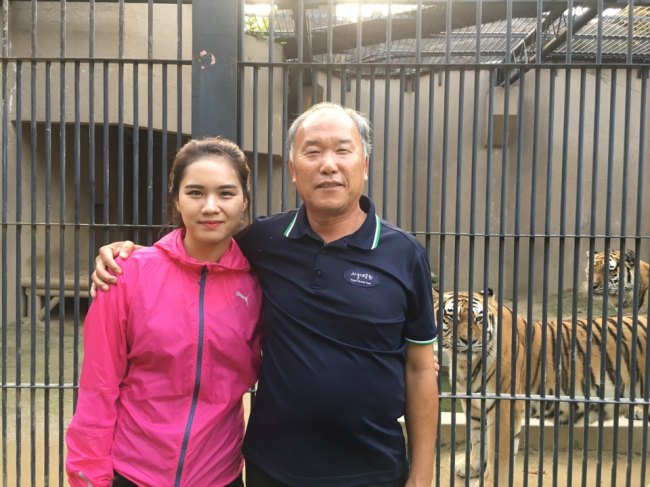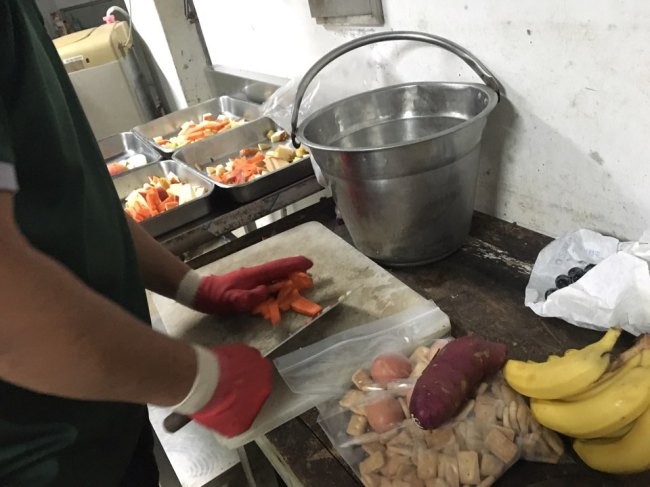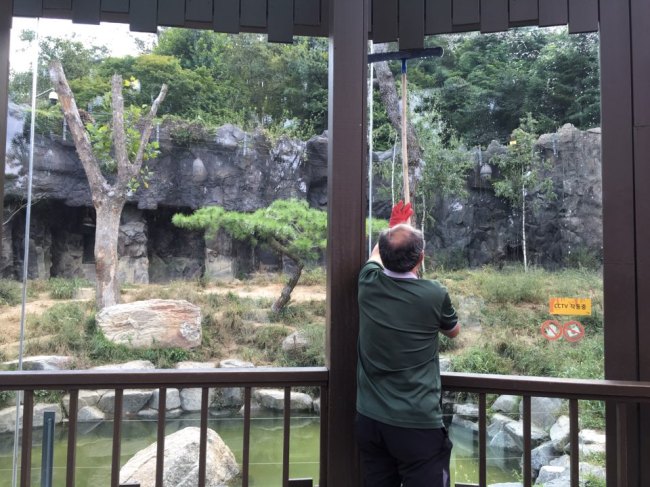Han Hyo-dong, 58, a master zookeeper supervising carnivores including tigers and leopards at Seoul Zoo, first joined the zoo’s animal welfare team in 1985.
Seoul Zoo, located in Gwacheon, Gyeonggi-do, opened its doors in 1984 with 77 species of animals on a 196,000-square-meter plot.
“I had the intention of learning about deer when I first joined, because I was thinking of operating deer farms in my hometown,” said Han, reminiscing the past when antlers could be sold at high prices.
Seoul Zoo, located in Gwacheon, Gyeonggi-do, opened its doors in 1984 with 77 species of animals on a 196,000-square-meter plot.
“I had the intention of learning about deer when I first joined, because I was thinking of operating deer farms in my hometown,” said Han, reminiscing the past when antlers could be sold at high prices.

“But a year later, I was sent to take care of crocodiles. I was in charge of making the best environment for the crocodiles to lay eggs and hatch them. I felt all my efforts paid off the first time I welcomed a baby crocodile,” Han said in an interview with The Korea Herald.
Because many of the animals kept at Seoul Zoo are far away from their original habitats, the conditions of soil, water, food and even climate should be controlled to cater to each animal.

In 2003, Seoul Zoo kicked off the Behavior Enrichment Program, developed to induce wild animals in the zoo to behave as they would do in nature.
After a year-long research and studies on the traits of each animals, the zoo says they were able to reduce the animals’ abnormal behavior by providing them with a similar environment to that of nature.

Installing ropes, play structures, and pools at animal breeding grounds is also part of the program.
“If human beings wanted to live in the wild, there would be a lot of preparation involved. Likewise, there must be a lot of preparation and consideration for wild animals to live with human beings,” said Han.
Han said such program may be far lacking compared to zoos abroad, considering other countries’ high quality of animal welfare and sufficient funding for operating zoos, but he also stressed the importance of visitors’ attitudes.
“It is very heartbreaking when I see visitors throwing trash or stones at animals just because animals are not moving or showing reactions. When a boy asks his mother ‘why is that lion not moving?’ a mother should be able to explain why the animal is not moving, instead of throwing a stone at the lion to make it move,” said Han.
Han said that he hoped to see more participation from zoo visitors such as fund donation to be help develop the zoo into a better place for both animals and humans.

“Although many animal activists argue that zoos play support animal cruelty, without zoos’ efforts to study endangered species and provide environments for wild animals to give birth to another generation, it would be more cruel to see them just dying out.”
He added that zoos and aquariums can teach visitors about nature and that by giving them a memorable experience, it could encourage them want to protect it.
“The zoo’s role is to constantly educate people, research animals and build resting zones for both animals and visitors. Rather than only craving economic benefits, zoos should be able to provide happiness to animals and people,” said Han.
By Kim Da-sol (ddd@heraldcorp.com)








![[Graphic News] More Koreans say they plan long-distance trips this year](http://res.heraldm.com/phpwas/restmb_idxmake.php?idx=644&simg=/content/image/2024/04/17/20240417050828_0.gif&u=)
![[KH Explains] Hyundai's full hybrid edge to pay off amid slow transition to pure EVs](http://res.heraldm.com/phpwas/restmb_idxmake.php?idx=644&simg=/content/image/2024/04/18/20240418050645_0.jpg&u=20240419100350)






![[From the Scene] Monks, Buddhists hail return of remains of Buddhas](http://res.heraldm.com/phpwas/restmb_idxmake.php?idx=652&simg=/content/image/2024/04/19/20240419050617_0.jpg&u=20240419175937)

![[KH Explains] Hyundai's full hybrid edge to pay off amid slow transition to pure EVs](http://res.heraldm.com/phpwas/restmb_idxmake.php?idx=652&simg=/content/image/2024/04/18/20240418050645_0.jpg&u=20240419100350)

![[Today’s K-pop] Illit drops debut single remix](http://res.heraldm.com/phpwas/restmb_idxmake.php?idx=642&simg=/content/image/2024/04/19/20240419050612_0.jpg&u=)